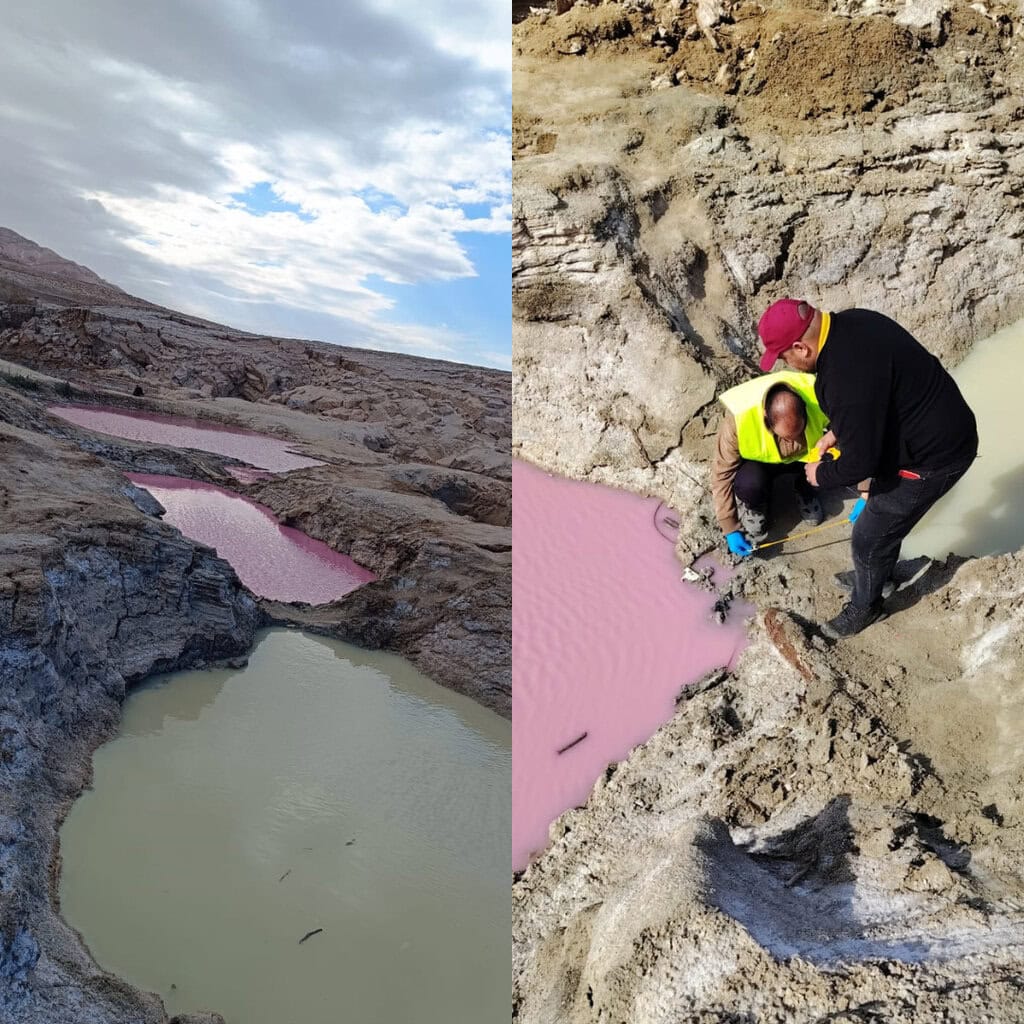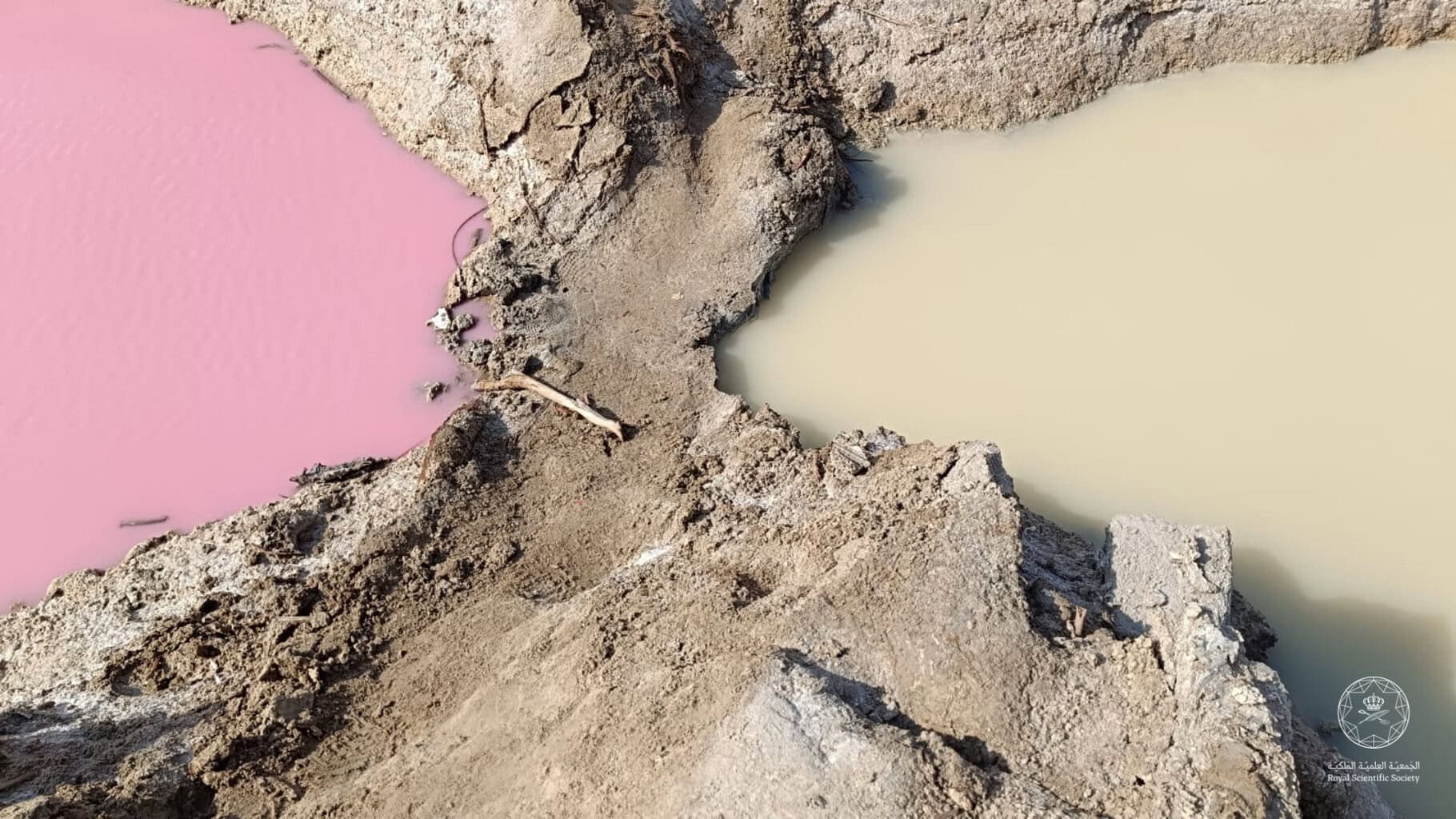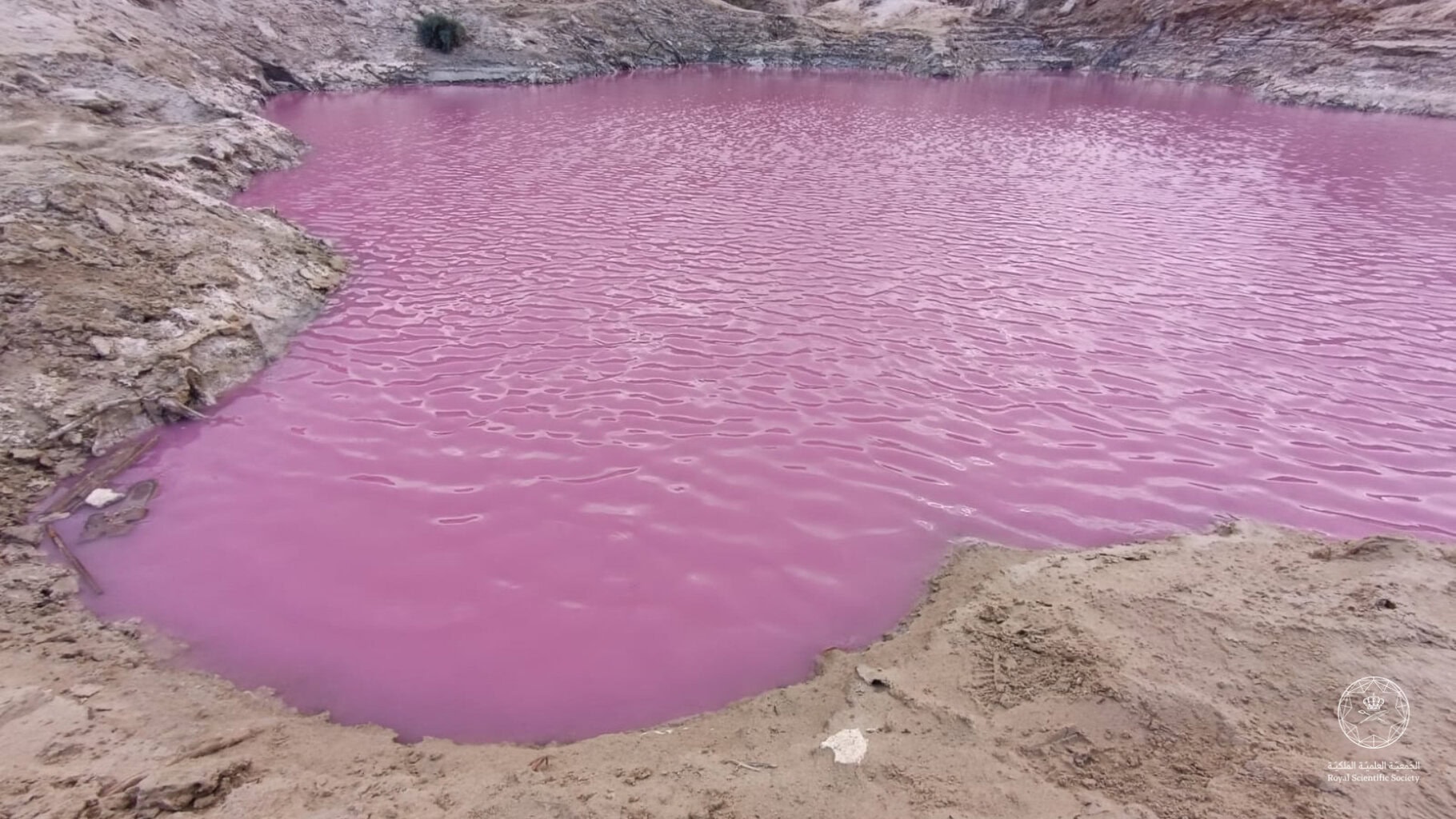Investigating the Pink Phenomenon in the Dead Sea: Causes and Scientific Insights
Why Are the Waters of the Dead Sea’s Ponds Turning Pink?
The Dead Sea, renowned for its extreme salinity and unique geological characteristics, has revealed a striking natural phenomenon. Along its receding shores, certain ponds have turned an unexpected shade of pink, capturing the attention of scientists and environmental researchers. This transformation has prompted a scientific investigation to determine its cause and what it reveals about the region’s evolving ecosystem.

The Science Behind the Pink Waters
A team of scientific researchers from the Royal Scientific Society (RSS) conducted a detailed investigation into these mysterious pink pools. Collecting water samples from the affected areas, they performed advanced laboratory analysis to identify the source of the unusual colouring. Their findings point to the presence of microscopic lifeforms. Halophilic (salt-loving) microorganisms belonging to the archaea or bacteria families are responsible for the striking transformation. These resilient microbes thrive in extreme salt concentrations, producing a pink-red pigment called bacterioruberin, a type of carotenoid compound.
Carotenoids belong to the same class of pigments that give carrots their orange colour and tomatoes their deep red hue. In this case, however, the pigment plays a crucial biological role. It shields the microorganisms from intense solar radiation and the harsh conditions of their saline habitat. Importantly, researchers confirmed that these microbes and their pigments pose no risk to humans or the environment.

Not Algae, Not Metals—So What Is It?
Despite speculation, the pink water is not caused by algae or dissolved metals. Scientific analysis confirms that the colour originates entirely from these unique halophilic microorganisms, which flourish in temporary sinkholes formed by fluctuating water levels. Similar microbes have been studied in other saltwater lakes across the world, including the Great Salt Lake in the United States and Lake Tyrrell in Australia.
Unlike these saline lakes, however, the Dead Sea is hypersaline, with salt levels exceeding 320 grams per litre. Under normal conditions, these extreme salinity levels prevent microbial populations from growing in significant numbers. However, the sinkholes provide a temporary refuge where stormwater and groundwater dilute the saline waters, creating an environment that occasionally allows these microorganisms to thrive and colour the water pink.

A Natural Laboratory in Flux
The formation of these sinkholes is a direct consequence of the Dead Sea’s receding water levels, a process that has been closely studied by environmental scientists. As freshwater seeps underground, it dissolves salt deposits, causing the ground above to collapse and form these evolving pools.
For researchers, these sinkholes represent more than just an unusual visual phenomenon. They provide a rare natural laboratory to study how changes in salinity, water chemistry, and microbial life interact. Understanding these processes offers critical insights into the future of the Dead Sea’s ecosystem, which is undergoing rapid transformation due to environmental changes.
Beyond Aesthetics: Scientific and Commercial Potential
Beyond their striking appearance, these microorganisms may have practical applications in science and industry. The naturally occurring carotenoid pigments they produce are highly valued for their antioxidant properties, making them of interest to the food, cosmetic, and pharmaceutical industries. Scientific researchers are now examining their potential uses in skincare, medicine, food additives and health supplements.
What Does the Future Hold?
This phenomenon highlights the growing urgency to protect the Dead Sea’s fragile ecosystem. Environmental researchers warn that human intervention, freshwater diversion, and climate shifts are reshaping this unique landscape faster than we can fully understand.
But the biggest threat to the Dead Sea is not just climate change—it is the region’s ongoing water crisis. The Jordan River, once its lifeline, has been drastically reduced due to damming, overuse, and competing national interests. This is not just an environmental issue. It is a political reality. Water scarcity in the region has long been a source of tension, and the Dead Sea is one of its most visible casualties.
Across the Middle East, water scarcity is reaching critical levels. Climate change is intensifying droughts, reducing rainfall, and raising temperatures, making already-limited water resources even scarcer. The over-extraction of water from rivers and underground aquifers is worsening the crisis. The Dead Sea is shrinking, but it is not alone – entire ecosystems, agricultural economies, and communities are being forced to adapt to an increasingly water-stressed future. The question is not just whether the Dead Sea can be saved, but whether nations in the region can come together to address water security before it is too late.
Without action, the Dead Sea will continue to shrink, accelerating sinkhole formation and permanently altering its delicate balance. Scientific research provides clear evidence of what needs to be done, but the solution does not lie in science alone. The future of the Dead Sea is a political decision. Restoring its water supply requires serious regional cooperation, policy changes, and a recognition that water is not just a resource, but a shared responsibility.
For centuries, the Dead Sea has been a place of wonder, known for its legendary buoyancy and mineral-rich waters. Now, it holds another secret. Thanks to the work of scientific researchers, we now understand that its pink ponds are more than just a rare spectacle. They are a warning sign – not just of an ecosystem in flux, but of a region facing one of the greatest environmental and political challenges of our time.
Research Contributors:
-Dr. Diya Alhaq Alsafadi – Director of Research for Industry Centre
-Dr. Almoayied Assayed – Director of Water, Environment & Climate Change Centre
-Dr. Farouq Alomari – Manager of Central Environmental Monitoring Division
-Lina Asfoura – Senior Specialist, Chemical Sciences Laboratories
-Mohammad Abdelfatah – Senior Technician, Water, Environment & Climate Change Centre
–Abdallah Obaidat, Supervisor of Water and Environment Lab
-Hussam Shana’a – Senior Technician , Water, Environment & Climate Change Centre
-The Research Team at the Laboratories of the Research for Industry Centre